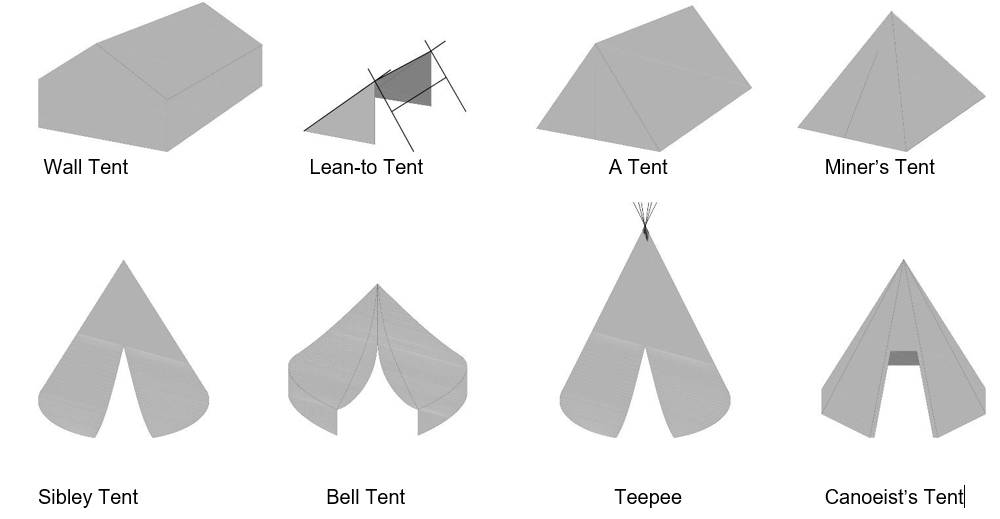Historical Overview of the Development of Temporary Architecture for Tourist Accommodation
DOI:
https://doi.org/10.31522/p.33.1(69).9Keywords:
architectural-constructive characteristics, periods of development, temporary architecture, tourist accommodationAbstract
Temporary architecture for tourist accommodation has become increasingly important in sustainable tourism planning, yet it remains underexplored in academic research. This paper aims to define temporary accommodation architecture and identify its stages of development. The focus is on the progress of architectural and structural features of these units in the USA and Great Britain, which are considered pioneers in this sector. The research employs qualitative analysis of literature on temporary tourism architecture and uses comparative methods to examine the evolution over time. As a result, three development phases were identified and analysed in relation to the broader stages of tourism development. The study also highlights significant inconsistency and diversification in the classification of temporary accommodation units. The main contribution of this research is the introduction of a new typological classification system for temporary tourist accommodations, based on their architectural and structural characteristics.
References
Al-Musawi, M.H. and Ali, S.H. (2025) ‘The role of temporary architecture in the historical environment: Baghdad city / historic Saray axis - A case study’. Alexandria Engineering Journal, 112, pp. 98-109. https://doi.org/10.1016/j.aej.2024.10.088
Ayakta, Y. and HZ, O. (2018) ‘A Comparison of the Requirements of Tent Fabrics for Various Usages’. Journal of Fashion Technology & Textile Engineering. https://doi.org/10.4172/2329-9568.S5-006
Bell Tent UK, n.d. belltent.co.uk. [Online] Available at: https://belltent.co.uk/pages/the-origin-of-bell-tents [Accessed 25 06 2024].
Berizzi, C.; Nirta, S.; Nerea Terlicher, G. and Trabattoni, L. (2021) ‘Sustainable and Affordable Prefabricated Construction: Developing a Natural, Recycled, and Recyclable Mobile Home’. Sustainability, 13(15), p. 8296. https://doi.org/10.3390/su13158296
Bjažić Klarin, T. and Kranjčević, J. (2023) ‘Turistički kampovi i montažni objekti zagrebačkog Jugomonta u Istri i na Kvarneru pedesetih i šezdesetih godina 20. stoljeća’. Ars Adriatica, 13, pp. 275-290. https://doi.org/10.15291/ars.4349
Britannica, n.d. www.britannica.com. [Online] Available at: https://www.britannica.com/ technology/tepee [Accessed 14 06 2024].
Brooker, E. and Joppe, M. (2013) ‘Trends in Camping and Outdoor Hospitality - An International Review’. Journal of Outdoor Recreation and Tourism, June. https://doi.org/10.1016/j.jort.2013.04.005
Burkart, A. & Medlik, S., 1974. Tourism - Past, Present and Future. London: Heineman.
Cairn Consulting, 2023. The 2023 North American Camping & Outdoor Hospitality Report, s.l.: Kampgrounds of America, Inc.
Cicvarić, A. (1984) Turizam i privredni razvoj Jugoslavije. Samobor: RO za grafičku djelatnost Zagreb.
Croatian Camping Association, n.d. www.camping.hr. [Online] Available at: https://www.camping.hr/ [Accessed 10 9 2020].
Čavlek, N.; Bartoluci, M.; Prebežac, D. and Kesar, O. (2011) Turizam, Ekonomske osnove i organizacijski sustav. Zagreb: Školska knjiga.
De Abaitua, M. (2011) The Art of Camping. London: Penguin Books Ltd.
Dusek, S. (2017) www.forbes.com. [Online] Available at: https://www.forbes.com/sites/susanadams/2017/12/08/tents-with-toiletsa-travel-company-under-canvas-takes-glamping-mainstream/ [Accessed 29 08 2024].
Freyer, W. (1998) Tourismus - Einfuerung in die Fremdenverkehrsoekonomie. Munchen, Wien: R. Oldenburg Verlag. https://doi.org/10.1515/9783486797527
Garst, B.A.; Williams, D.R. and Roggenbuck, J.W. (2009) ‘Exploring Early Twenty-First Century Developed Forest Camping Experiences and Meanings’. Leisure Sciences, 32, pp. 90-107. https://doi.org/10.1080/01490400903430905
Gartner, W. (1996) Tourism Development - Principles, Processess and Policies. New York, Bonn, Boston, London, Madrid, Paris, Tokio: Van Nostrand Reinhold.
Goeldner, C.; Ritchie, J. and Mcintosh, R. (2000) Tourism - Principles, Practices, Philosophies. New York, Brisbane, Singapore, Toronto: John Wiley & Sons, Inc.
Gyr, U. (2010) The History of Tourism: Structures on the Path to Modernity, Mainz: Institut für Europäische Geschichte (IEG) / Institute of European History.
Historic England, n.d. historicengland.org.uk. [Online] Available at: https://historicengland.org.uk/listing/the-list/list-entry/1204943?section=official-list-entry [Accessed 16 09 2024].
Hogue, M. (2011) placesjournal.org. [Online] Available at: https://placesjournal.org/article/a-short-history-of-the-campsite/ https://doi.org/10.22269/110531
Kephart, H. (1906) The Book of Camping and Woodcraft. New York: The Outing Publishing Company.
Kronenburg, R. (1995) Houses in Motion, the Genesis, History and Development of the Portable Building. London: Academy Editions.
Kronenburg, R. (2003) Portable Architecture. 3th ed. Oxford, Burlington: Elsevier/Architectural Press. https://doi.org/10.4324/9780080523194
Lucivero, M. (2012) Camping and Open-Air Tourism: An Opportunity for Sustainable Tourism in Coastal Areas. Barcelona, International Forum on Urbanism Escola Técnica Superior d’Arquitectura de Barcelona.
Marinović-Uzelac, A. (1986) Naselja, gradovi, prostori. Zagreb: Tehnička knjiga.
Marković, S. and Marković, Z. (1970) Osnove turizma. Zagreb: Školska knjiga.
Martín, X.; Martínez, A. and de Rentería, I. (2020) ‘The Integration of Campsites in Cultural Landscapes: Architectural Actions on the Catalan Coast, Spain’. Sustainability, 12(16), p. 6499. https://doi.org/10.3390/su12166499
Merriam-Webster, n.d. merriam-webster.com. [Online] Available at: https://www.merriamwebster.com/dictionary/glamping [Accessed 30 08 2024].
Mrđa, A. (2015) Method for Determining Tourism Carrying Capacity in Spatial Planning. Zagreb: Doctoral thesis.
Republic of Croatia, Ministry of Tourism (54/ 2016; 68/2019; 120/2019) Rulebook on the classification and categorization of catering establishments from the group of camps, Zagreb: National Gazette.
Sladoljev, J. and Pilar, L. (2019) Dnevnik jednog kampiste. Poreč: Top Camping d.o.o.
Tost, X.M. (2015) ‘Architecture for Informal Tourism - Mild Occupation of Landscape through Campsites’. Athens Journal of Tourism, 2(4), pp. 223-240. https://doi.org/10.30958/ajt.2-4-2
Trabattoni, L. (2024) Planning and Designing Absent City, Campsites as Temporary Settlements. New York: Routledge. https://doi.org/10.4324/9781003468530
Trisno, R.; Husin, D.; Lianto, F. and Hartoyo, C.E. (2025) ‘The Concept of Tent as a Temporary Architecture in the Millennium Era’. Space and Culture, 28(2), pp. 252-262. https://doi.org/10.1177/12063312231159220
Twose, S. and Perkins, N. (2015) On the Edge Glamping: Design investigations in the New Zealand Landscape. Wellington: Victoria University of Wellington.
United Nations, 2015. sustainabledevelopment.un.org. [Online] Available at: https://sustainabledevelopment.un.org/topics/sustainabletourism [Accessed 15 12 2022].
Vreš, G. and Demšar Vreš, T. (2016) ‘Garden Village Bled glamping as an innovative revitalization of degraded landscape’. AR. Arhitektura, raziskave, 15(2), pp. 40-47.
Vrtodušić Hrgović, A.-M.; Cvelić Bonifačić, J. and Licul, I. (2018) ‘Glamping - New Outdoor Accommodation’. Ekonomska misao i praksa / Economic Thought and Practice, 27(2), pp. 621-639.
Walton, J.K. (2009) ‘Prospects in tourism history: Evolution, state of play and future developments’. Tourism Management, 30, pp. 783-793. https://doi.org/10.1016/j.tourman.2009.05.010
Young, T. (2017) Heading Out: A History of American Camping. Ithaca and London: Cornell Univesity Press. https://doi.org/10.7591/cornell/9780801454028.001.0001

Downloads
Published
Issue
Section
License
Copyright (c) 2025 Marinko Sladoljev, Ana Mrđa, Sanja Gašaprović, Silvio Bašić

This work is licensed under a Creative Commons Attribution 4.0 International License.
Copyright (c) 2021 authors and journal.
This work is licensed under a Creative Commons Attribution 4.0 International License.
Authors who publish with this journal agree to the following terms:
In agreeing this form, you certify that:
- You read the ethical codex of the PROSTOR available at journal web.
- You submitted work is your original work, and has not previously been published and does not include any form of plagiarism.
- You own copyright in the submitted work, and are therefore permitted to assign the licence to publish to PROSTOR.
- Your submitted work contains no violation of any existing copyright or other third party right or any material of an obscene, libellous or otherwise unlawful nature.
- You have obtained permission for and acknowledged the source of any illustrations, diagrams or other material included in the work of which you are not the copyright owner.
- You have taken due care to ensure the accuracy of the work, and that, to the best of your knowledge, there are no false statements made within it.
- All co-authors of this submitted work are aware of, and in agreement with, the terms of this licence and that the submitted manuscript has been approved by these authors.






